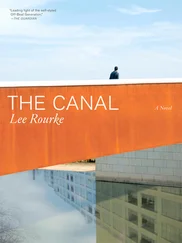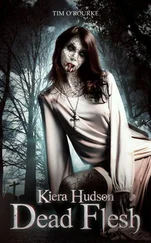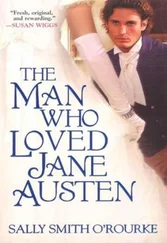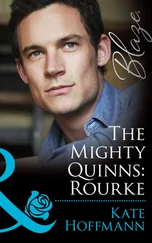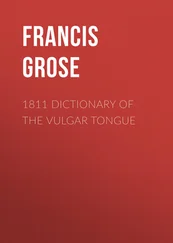‘The … Gift … Whispers …’
no sense at all
The caffeine is charging through me. I walk through the shoppers on the High Street, down towards the sea, the pier. The crowds seem to be melting away from me with each step, even when a dog on a lead takes offence at my stick I simply glide past it without much effort. Suddenly, I see her: Laura. She’s walking with him, the man from the flat on Toledo Road, from the black Mercedes. I’m sure it’s her; it certainly looks like her, the same hair, cheekbones, the same gait. They’re in conversation, even though he’s talking to another person on his phone. I hang back a little, aware that I’m catching them up too quickly. I walk to my right, by the shop windows and doorways. I follow them down the High Street. They remain in deep conversation, all three of them, all the way, these two walking quickly and gesticulating to each other. I imagine the voice on the other end of the phone is walking along another street, heading for the pier, too, gesticulating into thin air.
I’m sure it’s Laura. They turn right onto Alexandra Street and enter the Old Hat, another café bar. I wait where I can see them without much danger of them noticing me, just across the way, down an old mews by an air-rifle shop. I can see them at the bar; they order what looks like a shot of vodka each, downing it in one. Then the black Mercedes pulls up outside the bar. I step back and wait for a few seconds. When I look over I catch them getting into the car, before it screeches off along the one-way system, towards the High Street.
I’m sure it was her. It had to be her. Who else could it be? They can’t all look alike, whoever it was the men had working for them. It doesn’t work like that; the customer demands choice. It makes no sense for all the girls to look the same, no sense at all.
pushing against us
I walk to the pier. I’m hoping there’ll be a lot of other people around, just in case. I’m determined to be with Laura, just to see if she’s all right. I can’t control what I’m doing. I walk without looking, quickly through the throngs. To my relief, when I reach Pier Hill, I can see the pier is already busy with people walking along it and queuing for the train to take them slowly to its end. I look around, just in case the black Mercedes is parked up on Royal Terrace or down on the esplanade. It seems safe, normal, as if everything that’s happened to me has been some terrible hallucination and everything is real again.
I pay my money to the man in the hut at the gate to the pier. I walk slowly, trying to blend in with everyone else. I’m met by gusts of wind, huge williwaws charging down the pier, which nearly knock me off my feet. I step into it, struggling, digging in my stick, until this too becomes normal, real, and I begin to find each step easier to manage. The tide is in and the grey water is choppy, attacking each stanchion of the pier below. It feels like the entire estuary is pushing against us and at any moment the foundations of the pier will give way to the sudden tumult and fall down into its depths, but I don’t care, I’m sick of nightmares and know that if I reach the end of this pier everything will be okay, just Laura to protect now, to guide back to shore.
About halfway along the pier I see a baby seagull, hobbling along the planks as a group of maybe four or five other, bigger seagulls mercilessly swoop down to take pecks at it, attacking it, bombing down from a frantic queue above. I try to shoo them away but it’s no use, they dive at the baby seagull from all angles, and so quickly that I can’t really see where they’re coming from, or determine which one will be next, and besides, they’re diving from a safe distance. The whole scene is over before I can do anything else to stop it, ending as quickly as it began: the baby seagull dead on the planks, tufts of down blowing in whorls around its limp, splayed wings and plump breast. The racket drifts away as the group of seagulls fly off, seemingly happy with the result.
I walk over to the dead baby seagull and pick it up. It’s still warm, its downy feathers wondrous to the touch. I place it aside, near to a bin, out of people’s sight. I think about dropping it into the sea, but this feels wrong. Then I suddenly change my mind a couple of metres up the pier, worried that the poor thing will be thrown out with the discarded kebab and fish and chip wrapping in the bins, so I walk back and pick it up again; a few people are watching me but it doesn’t matter and I gently drop it into the estuary. I turn away before it hits the surface. I don’t need to see that.
Maybe this event with the baby seagull will affect me in some way I’m not aware of? Maybe its cruel death will numb something inside me for ever? I don’t know. I’ll never know. All I know is that I’m walking along the pier outside myself. Looking at myself, observing everything I do: each gesture, each turn of my head, each blink of an eye. Looking inwards, oblivious to the things ahead of me: the crowds, the huge grey sky, the murky depths below, Laura waiting by the bell.
looping at intervals
She’s leaning on the rail, waiting, looking out to sea, her back to me, facing the widening mouth of the estuary. I hesitate as soon as I spot her and stop walking. I watch her for some time: elevated above me on the second platform of the pier, the perfect pedestal. She looks completely at ease, like someone away from a busy work schedule, happy and content. She looks beautiful, like she’s waiting for a lover, or just enjoying the great expanse of space before her. Elevated high enough — up above everybody else on the pier — to appreciate the vista before her. Then I notice something else: she’s wearing different clothes from when I’d just seen her with the man. She’s wearing skinny jeans and some sort of army fatigue jacket, zipped up close to her neck. She’s wearing a rucksack on her back, too. Just like me. I regain my step and walk towards her, so that I can get a closer look. Just to make sure that it’s actually her. As I get closer I notice that although her hair is still blonde, it’s now shorter again, and seems to be styled differently than it was the last couple of times I’d seen her. How did she have the time not only to change her clothes but the style of her hair in the short amount of time it has taken me to walk to the end of the pier, not to mention how she then got here before me? It’s possible, I think. I have been dawdling: she could have walked right past me on the pier when I was watching the baby seagull. It has to be her, it is her, but she keeps on changing every time I see her. I walk towards her. It has to be her, she’s the only person who knows to meet me at that exact spot at this exact time. I pull out my phone, I look at the time: we’re bang on schedule. Instead of putting my phone away, I stop and lean on the rail. I point my phone at her and begin to film her. I want to capture her, to keep the reality of her in my pocket, to take it with me, to view it whenever I see fit. I frame her just off-centre, so that more of the pier is in shot, and she takes up a tiny space in the top right-hand corner of the frame. I leave it recording for about one and a half minutes and then stop, putting the phone back in my pocket.
The image of the dead baby seagull falling to the depths of the grey water suddenly hits me. I stagger a little and have to dig my stick into the planks beneath my feet for support. It gets stuck between two freshly repaired boards. I yank it out with all my might and continue to walk towards her. I look up at the sky, at the grey clouds, knowing that Saturn is somewhere up there, with me, hanging above me, keeping me rooted. I need it to be there right now, just the thought of it there, just behind the clouds. My thoughts of Saturn are quickly dashed by a group of seagulls above me again, not the usual shrill, ear-splitting racket, more of a wail, as if they are mourning the recently departed baby seagull, like women at funerals in the Middle East: wailing in unison, grieving for all to witness, to record and to register. I watch as they whorl around me, elliptical, looping at intervals, swooping downwards in arcs: as if mimicking Saturn’s slow, repetitive trajectory through space.
Читать дальше
Конец ознакомительного отрывка
Купить книгу


